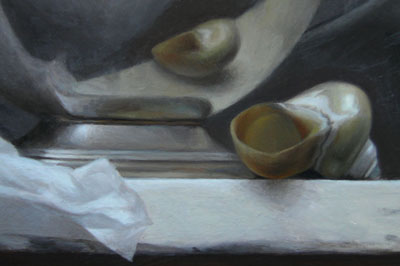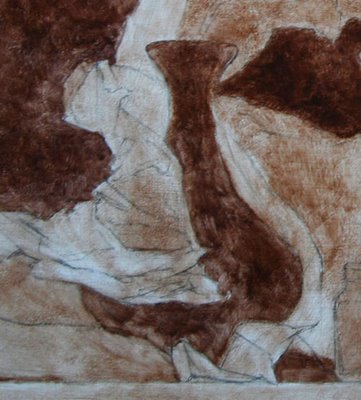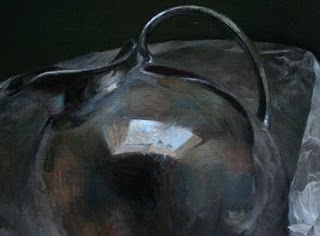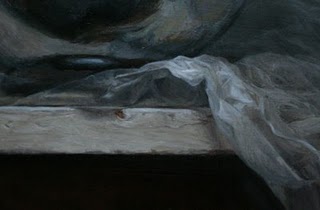Sterling Boat: Session 7
 Wednesday, November 25, 2009 at 8:14PM
Wednesday, November 25, 2009 at 8:14PM 
For posts 2006-2010
please visit
sadievaleri.blogspot.com
Sadie’s current site is at
SadieValeriAtelier.com
UPDATE February 1, 2021
I have recently discovered that unfortunately this Squarespace blog has failed to maintain most the images for older posts on this blog. Luckily, the original Blogger version is still live at sadievaleri.blogspot.com and all the posts and images from 2006-2010 are still visible there.
For my current artwork, teaching, and blog please visit Sadie Valeri Atelier.
 Wednesday, November 25, 2009 at 8:14PM
Wednesday, November 25, 2009 at 8:14PM 
 Sunday, November 22, 2009 at 11:20PM
Sunday, November 22, 2009 at 11:20PM 
 Saturday, November 21, 2009 at 8:07PM
Saturday, November 21, 2009 at 8:07PM 


 Friday, November 20, 2009 at 8:07PM
Friday, November 20, 2009 at 8:07PM  Wednesday, November 18, 2009 at 8:53PM
Wednesday, November 18, 2009 at 8:53PM  Sunday, November 15, 2009 at 7:57PM
Sunday, November 15, 2009 at 7:57PM  Friday, November 13, 2009 at 8:51PM
Friday, November 13, 2009 at 8:51PM 
 Monday, September 28, 2009 at 1:41AM
Monday, September 28, 2009 at 1:41AM
 Tuesday, May 12, 2009 at 11:30PM
Tuesday, May 12, 2009 at 11:30PM 

 I'm pretty happy with it at this stage, although for several painting sessions I was really struggling over the brightest areas of wax paper in front. It's always hardest for me to figure out how to paint an area with lots of bright highlights.
I'm pretty happy with it at this stage, although for several painting sessions I was really struggling over the brightest areas of wax paper in front. It's always hardest for me to figure out how to paint an area with lots of bright highlights.
 Thursday, March 26, 2009 at 8:31PM
Thursday, March 26, 2009 at 8:31PM Here are the stages:
 Overpainting stage 2
Overpainting stage 2 Overpainting stage 3
Overpainting stage 3This painting and all others listed under "available work" are for sale. Please email me for a price list.
If you haven't yet, come on over and check out my new blog, Women Painting Women, it's a great collection of 59 amazing artists and counting!
 Tuesday, March 17, 2009 at 9:59PM
Tuesday, March 17, 2009 at 9:59PM I'm trying an experiment, so see if I can work on a series of small paintings while I also work on a large painting. My plan is to work most the day on the Big Painting, but reserve an hour or two to work on the smaller project, hopefully one that I can finish in a week.
I'm usually completely focused on one painting at a time, which I like because I go to bed thinking about it and wake up knowing what I'm going to start in the studio instead of dithering about What To Do. But at my current rate of output it will take me forever to get to my goal of 30 portfolio-standard pieces. So I'm hoping I can speed up and start cranking out more than one painting every month or two.
On another note, I've started a new blog devoted to contemporary Women Painting Women. If you have any suggestions for work to include there please email me! sadiej[at]gmail.com
 Wednesday, February 4, 2009 at 9:43PM
Wednesday, February 4, 2009 at 9:43PM
More about this painting:
In 2008 I began a series of still life paintings using crumpled wax paper as my subject. I was drawn to the material because I can twist, and crush the wax paper into draped and spiraling shapes to create dynamic environments for the simple, antique bottles and pitchers I collect.
I am always on the lookout for interesting vessels to paint, and when I found a spherical silver water pitcher at a flea market, I instantly fell in love.
Certain objects call to me and must be painted. I have learned that collecting something not-quite-right, just because I "might use it someday" is rarely successful. Those objects languish on my shelf for years, always passed over. The objects I paint resonate with me deeply and demand to be painted immediately. I had a vision of the silver globe pitcher draped in a "shawl" of crumpled wax paper, with the shawl arranged as if a small breeze were filling and lifting it.
When I set up a new still life I spend several studio days crumpling paper and discarding it, moving objects around, trying to find the best shape and composition through my viewfinder. The wax paper takes gentle coaxing and twisting to arrange it in with the feeling I am envisioning.
The final arrangement must look fresh and transparent, like it just landed there, no matter how many discarded pieces it took to reach my vision.
I begin all my paintings with a detailed contour drawing in graphite pencil on wooden panel I have prepared myself with homemade gesso. I spend several days on the drawing, first on trace paper and then directly on the board. I find that if I spend the time needed on the drawing, the structure and believability of the final painting is more successful. I never rush the drawing process, even when I am anxious to begin painting.
Once the drawing is finished, I paint in many layers over the course of a month or more, first in grays, called a "grisaille", to establish values, and later in color. I use tiny brushes from start to finish, and work on a small area each day. I move slowly around the painting, bringing each section up to the highest degree of finish possible before moving to the next area. Silver Globe Pitcher took me over 120 hours to complete over the course of 2 months.
It is only the latest stages of my process where I get to enjoy the beautiful and most subtle effects of light and texture on the surface of the objects, like the turquoise tarnished area at the base of the pitcher, the transparent paper melting into the background, the pedestal of the pitcher peeking through the folds of paper. But it requires all the earlier stages of building a solid drawing and value structure in order to successfully render the beauty I see in the surface details.
Silver Globe Pitcher is a rare instance where I include a self-portrait in my painting. I wanted the self-portrait to be a discovery, so the viewer sees and appreciates the whole composition first, before noticing my tiny image reflected in the vase. That way, each viewer has a sense of having discovered something on their own, a small secret in the painting.
My self-portrait embedded in the painting allows each person to discover my own image peering back. The viewer can see the entire little studio where I worked on this painting, and have a sense of being able to get a glimpse into the experience of the painter.
 Tuesday, January 27, 2009 at 7:51PM
Tuesday, January 27, 2009 at 7:51PM  Tuesday, January 27, 2009 at 12:12AM
Tuesday, January 27, 2009 at 12:12AM I am thrilled to report that my recent video painting demo got a wonderful (embarrassingly wonderful) writeup on the blog Art Studio Secrets. In addition to the very nice things written, I am also flattered because the other artists profiled on this new blog are artists whom I have long admired: Alex Kanevsky, Carol Marine, David Kassan, and Paul Seaton.
 Tuesday, January 20, 2009 at 7:05PM
Tuesday, January 20, 2009 at 7:05PM I thought I wouldn't get much done today with so much juicy politics to watch, but Obama's Inauguration speech this morning (9am my time) was so energizing that when it was over I was too jumpy to watch more on TV, and I was out in the studio painting all day. I did listen to live NPR dissection of the day's events all day.
I've been reading the book "Flow", which is all about how optimum human experience occurs when we focus on challenging work, so I particularly liked this part of the President's speech:
"...there is nothing so satisfying to the spirit, so defining of our character, than giving our all to a difficult task."
Who can disagree with that?
 Friday, January 16, 2009 at 10:30PM
Friday, January 16, 2009 at 10:30PM  Detail of work in progress
Detail of work in progress Detail of work in progress, previous stage
Detail of work in progress, previous stage
I've also been struggling with the swatch of wax paper that runs behind the pitcher. The crinkles up in the right corner catch the light and jumps out quite a bit, but if I paint them with too much contrast they look a) too eye-catching and b) dumb. It's been a lot of push and pull to get it to this stage.
For some reason the bottom pedestal of the pitcher I worked on last week was a breeze in comparison to these areas, even with all that semi-transparent wax paper overlapping the pedestal.
All these photographs are reducing the color saturation compared to the actual painting. My paintings are of course very monochromatic, but I use a full range of hues to mix my neutral colors, and in person you can see a lot more range of hues within the values. For the final photo I'll work harder to get a very accurate photo.
Mediums:
I still like working with the tubed Maroger quite a lot, but it has a tendency to dry fairly matte in the dark areas. So I'm going back to the linseed-based medium for the darks, especially the background. I'm sticking with the Maroger for the light areas.
 Friday, January 9, 2009 at 8:06PM
Friday, January 9, 2009 at 8:06PM 

I'm experimenting with different mediums - my normal one based in linseed, a new one based on poppyseed oil, and a very nice big tube of Maroger medium my father gave me for Christmas. I didn't know your could buy it in tubes, I thought you had to make it yourself and it sounded complicated. So far I like the tubed stuff, it's a stiff golden brown gel that mysteriously liquifies and turns clear when mixed into the paint. I'm curious to see what it's like after it dries a bit. The poppyseed oil based medium dries too slow, completely wet even days later.
I've started looking for a studio to rent so I can have enough space to paint and draw a model. I'm looking for a north light studio with about 400 square feet here in San Francisco.
 Sunday, November 23, 2008 at 11:27PM
Sunday, November 23, 2008 at 11:27PM So even though the composition looked nice in the sketch, the larger scale made it look overwhelming, way too big. There's a lesson in here.
It's a change for me to paint this big. The previous paintings in this "Wax Paper" series are 11 x 14 inches and 12 x 12 inches. So 16 x 20 is a HUGE leap. It may not sound much bigger, but to me it's enormous. This is the problem with blogs... there's no sense of scale.
You'll also notice the left side of the crumpled wax paper has a new shape. I decided it looked better if it angled up at the left, instead of tapering down and to a point, running off the left into infinity.... So I crumpled up the wax paper on one side (gently) and altered the composition.
I've drawn the final version on trace paper so I can transfer to the gessoed panel. I usually draw directly on the panel, but since I labored so hard to gesso them so perfectly, I was afraid of dinging or marring the perfect surface with a lot of erasing. So I nearly finalized the contour drawing on paper before transferring it.
As an final note, I'd love to draw your attention to this hi-LAR-ious blog entry by an abstract painter who says, in part:
"...what’s so hard about painting a realist painting nowadays, when even a no-talent can transfer images and paint textures straight from a computer to a canvas?"
To which I nearly choked, as you can imagine. Laurie Fendrich, I sure hope you find my link to your two posts on the superiority of abstract painting to realist painting, so you take a good look at my blog here and see that realist painting takes quite a bit of study and work, even "nowadays".
Oh, and especially note the parts about how the Old Masters used optical devices, implication being that anyone with a lens and a grid could have produced the masterworks of art history.
Le sigh....
----
 Sunday, November 23, 2008 at 9:15PM
Sunday, November 23, 2008 at 9:15PM I find my paintings work best if I spend time at the beginning imagining the finished piece as clearly as possible. I try to imagine the feeling it will have. I love the feeling of calm, cool overhead light resting on eye-level objects. I want the painting to feel like you are really seeing them and feeling the quiet.
The sketch only approximates this, but it helps me crystallize the feeling in my own mind.